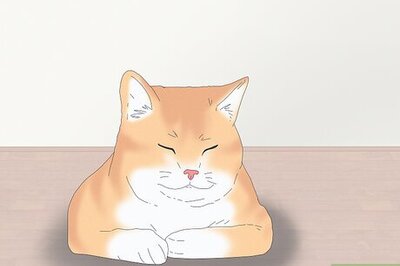
views
London: A tiny terracotta urn at the heart of a 127-year-old rivalry between England and Australia is the star of an exhibition at the home of cricket.
Not even the guardians of the Ashes at the Marylebone Cricket Club (MCC) museum are exactly certain what is in the urn given to English cricket captain Ivo Bligh by his future wife while on a playing tour of Australia in 1883.
What they are sure about is that the brown-coloured urn, slightly bigger than an egg cup, is not the trophy that England are attempting to win back from Australia this year in the test series that is held every two years.
Museum manager Antony Amos said that contrary to popular misperception the Ashes urn is not a trophy, but a piece of cricket history donated to the MCC by Bligh's widow.
"People think it's a trophy, but it's not," Amos told Reuters. "It's just a symbol."
The museum also holds the much bigger urn-shaped Waterford Crystal trophy, which was commissioned by the MCC as the official Ashes trophy after discussions with the England & Wales Cricket Board (ECB) and Cricket Australia.
That trophy was first presented to Mark Taylor after his Australian side emerged triumphant in the 1998-99 Test series against England. The 2009 Ashes series began this week in Cardiff, Wales. Lord's, the home ground of the MCC, will host the second test in this year's five-match series.
While the Ashes urn is the pride of the MCC museum, it also shares its home with other hallowed cricket treasures that the MCC has been collecting since 1864.
The oldest known cricket ball, busts and portraits of the game's greats, signed bats, caps, clothing and even a stuffed sparrow are all part of the MCC museum's displays in Lord's cricket ground in north London, where tours of the museum and Lord's are available.
The term "Ashes" was first used after England lost to Australia - for the first time on home soil in August 1882. A day later, the Sporting Times carried a mock obituary to English cricket which concluded that: "The body will be cremated and the ashes taken to Australia".
The concept caught the imagination of the sporting public and a few weeks later, Bligh and his team set off to tour Australia, vowing to return with "the ashes". His Australian counterpart, WL Murdoch, similarly vowed to defend them.
The museum also includes the folklore concerning the urn's actual contents. Some say they are the ashes of burned bails -- the pieces of wood which rest on top of the wooden stumps -- other tales say Bligh's maid had to replace the contents with ash from his fireplace after an "accident".
Despite the urn, the copies of the annual Wisden almanac carried by British POWs and even the boots of Australian bowler Shane Warne, one of the most popular exhibitions remains the cabinet housing the stuffed sparrow accidentally killed by bowler Jehangir Khan at Lord's cricket ground in 1936.
"We get kids coming in wanting to see the bird," smiles Amos, gesturing towards the cabinet housing the unlucky sparrow.
















Comments
0 comment